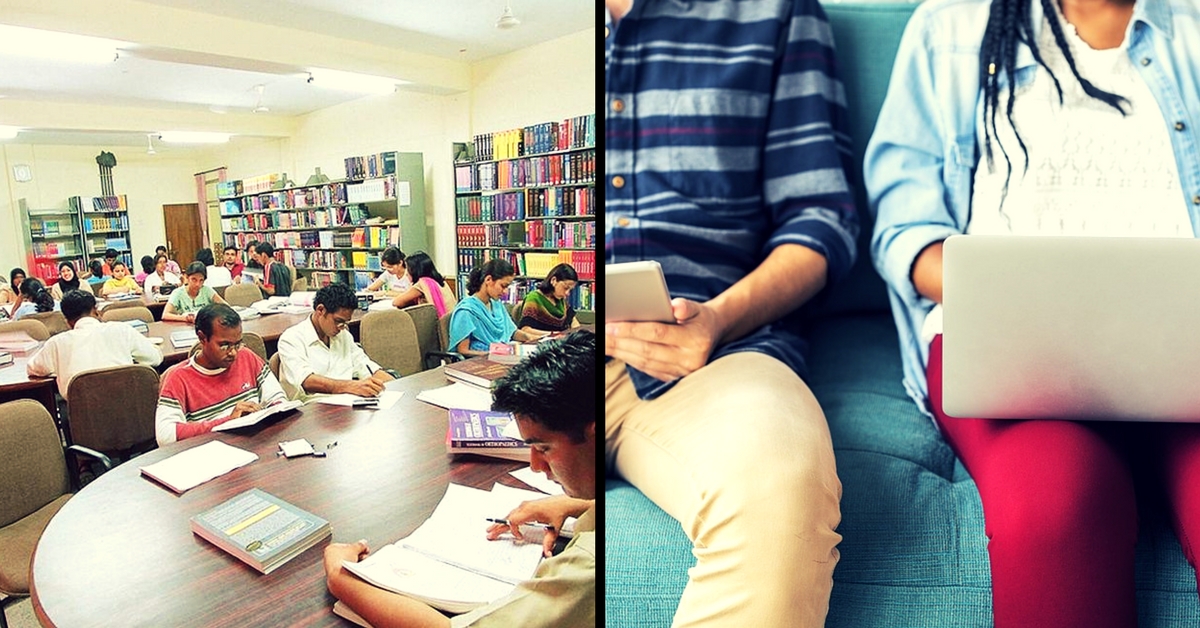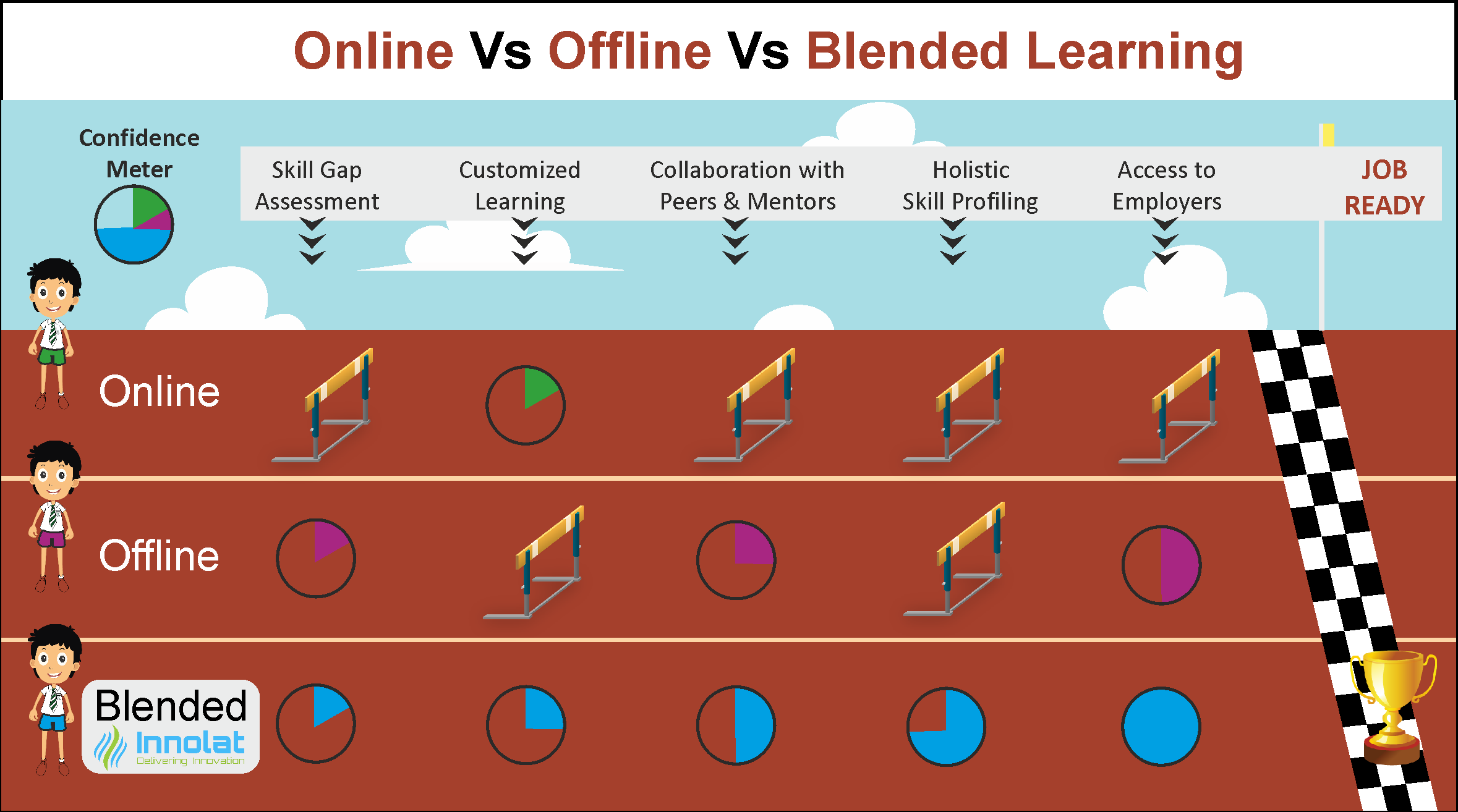Going beyond Classrooms: How a Blend of Online and Offline Education Can Help Students Better
Rohan Potdar writes about the limitations of dedicated classroom learning, and online education. This is how a blended format can help students.

Rohan Potdar writes about the limitations of dedicated classroom learning, and online education. This is how a blended format can help students.
Classroom or offline training is reminiscent of the Industrial age where the emphasis was on large scale production by deploying physical resources. Its final objective is to train a large number of students using a common and a standardized process. This obviates the need to tailor education as per the recipient’s talent, aspirations, and needs. Here, it is pertinent to make a distinction between personal attention and personalized learning. A classroom may allow the tutor to interact with individual students, but the course content itself may not necessarily match the needs of individual students.
The need to go beyond classrooms:

Source: By Dr.Deanndamon [CC0], via Wikimedia Commons
One of the biggest problems of classroom training is its sluggishness in staying abreast with rapidly evolving technologies and industry trends. The rate of change in technology has far outstripped the pace of change in university curriculum. Given the centralized nature of education content creation and stipulated ways of delivering it to the students, gaps arise between what is taught and what is needed to be job ready. Hence, even after spending more than 20 years of life in the confines of various classrooms cramming formulae and chapters in the curriculum, a graduate student leaves the education system with a sense of apprehension about his/her job prospects. Consider this – According to a study, out of 1.5 million engineers passing out of various colleges in India, only 3% are suitable to be employed in software or product market and only 7% in core engineering roles.
You may also like: Good News for MBA Aspirants: IIM-A Now Offers an Online PG Course Too!
Today, there is a dire need for students and academicians to re-look at learning as a constant and democratic process rather than the monopoly of the varsity.
Online education is becoming important:

Source: Pixabay
Online education market in India is set to double from the present $20 billion to $40 billion in 2017. Clearly, there is a formidable demand for an alternative source of learning. Online learning has set students free from bounds of classrooms and the inflexibility of the curriculum. It offers an on-demand access to courses of their choice. This is leading to a big socio-cultural shift in the way learning is perceived and consumed by the youth. Large populations of students in remote locations now don’t find themselves handicapped by geography. Young working professionals can now upgrade their skills and thus enhance their career prospects at their own convenience.
But there might be some grey areas:
One of the biggest requirements for students is to determine what skills they need to be employable in the job market. While that may not be institutionalized in a classroom setup, most online courses don’t help much either.
Being used to supervision and handholding by a tutor, students expect similar features in online courses. This facet of learning that allows two-way query resolution is one of the most important needs of a learner and most often they miss this in an online course.
Continuous tracking of performance with regards to generally accepted yardsticks is very effective in helping learners complete their courses successfully. Today, the average rate of completion of online courses is an abysmal 10%.
Blended learning could be the key:

Blended learning combines the best of classroom and online education. It relies on a healthy mix of different learning modes to optimize learning as a process. As a matter of fact, blended learning is on a rise and being used more than pure online mode in countries around the world. The biggest advantage of blended learning is that it retains human connect between the instructor and the student whilst automating and personalizing the delivery of content. This enables the instructor to play the role of a mentor as it takes the pressure off from administering the learning as an instruction. A pilot conducted by Microsoft Research found that blended learning intervention led to a small but significant improvement in learning.
You may also like: This Former Journalist Works Extra Hours So He Can Educate Underprivileged Children
One of the players in Blended Learning space is Innolat Technologies. “We are in the business of making graduates Industry-ready by improving their employability through our unique personalized blended learning model,” says Tushar Vadera, Co-Founder & CEO of Innolat. Its platform- iLrnn incorporates customized learning content based on a student’s preferences and strengths; provides a mix of online and offline learning; and offers an easy-to-use platform to find suitable jobs. While joining the employability enhancement program at Innolat, a student starts with an initial handholding in offline mode but after completion, he/she is able to learn purely online.
While online learning is emerging strongly across the world, a blended learning approach, arguably, may be best suited to achieve optimum learning outcomes for the offline-driven Indian student. Some are showing the way.
(Written by Rohan Potdar)
Like this story? Or have something to share? Write to us: [email protected], or connect with us on Facebook and Twitter.
NEW: Click here to get positive news on WhatsApp!
If you found our stories insightful, informative, or even just enjoyable, we invite you to consider making a voluntary payment to support the work we do at The Better India. Your contribution helps us continue producing quality content that educates, inspires, and drives positive change.
Choose one of the payment options below for your contribution-
By paying for the stories you value, you directly contribute to sustaining our efforts focused on making a difference in the world. Together, let’s ensure that impactful stories continue to be told and shared, enriching lives and communities alike.
Thank you for your support. Here are some frequently asked questions you might find helpful to know why you are contributing?


This story made me
-
97
-
121
-
89
-
167











